Growing Basil Indoors is not only possible but easy as well. Doing this will allow you to enjoy the fresh harvest of this culinary herb year-round, even in Winter!
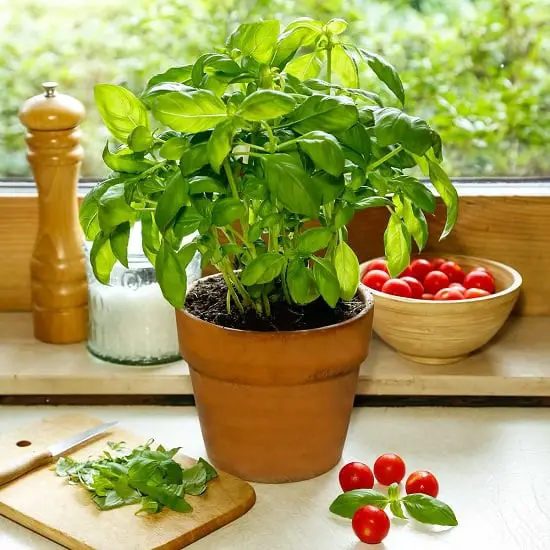
Learn how to grow basil indoors as a houseplant in this article to have this popular aromatic herb available year-round in your home. It’s quite wonderful if you don’t have any outdoor space available or you want to grow it in winter to enjoy the fresh basil sprigs instead of preserved ones.
Botanical name: Ocimum Basilicum
Plant Type: Annual herb of the mint family
Hardiness Zones: 2-11
Propagating Basil
Propagating Basil is easy. You can start it with cuttings or seeds. However, instead of growing from seeds, buying one healthy basil plant from your nearby store or garden center and multiplying it anytime during the growing season is better.
1. Grow Basil Cuttings in Water
Take 4-5 inches long cuttings from an existing basil plant. Make sure to make a cut below the leaf node. Remove all the leaves off the cuttings, but save a couple of sets of leaves on the top end. If there are flowers, remove them too.
Place the cuttings in a jar of water, submerging only the bottom 2/3 part of the stems. Keep this jar in a warm spot–A windowsill that receives morning sunlight would be fine.
- Keep changing the water every day.
- Your cuttings will be ready for planting in 2-4 weeks.
- Learn more about growing basil in water here!
Grow basil from cuttings in soil or water and create new specimens in no time.
2. Growing Basil from Seeds
Basil is very easy to grow from seeds. Start the seeds anytime after early spring and as late as 5-6 weeks before the average last frost date. If you live in a frost-free climate, you can plant the basil seeds indoors or outdoors anytime, except for your peak when the temperature goes above 90 F (32 C)!
Fill up the seed tray or mini pots with seed mix, sprinkle the basil seeds on top, and work them into the soil gently. As the seeds are tiny, plant them no more than 1/4 inch deep and cover with the soil briskly. Follow the usual care steps you take for growing other plant seeds.
Basil Varieties
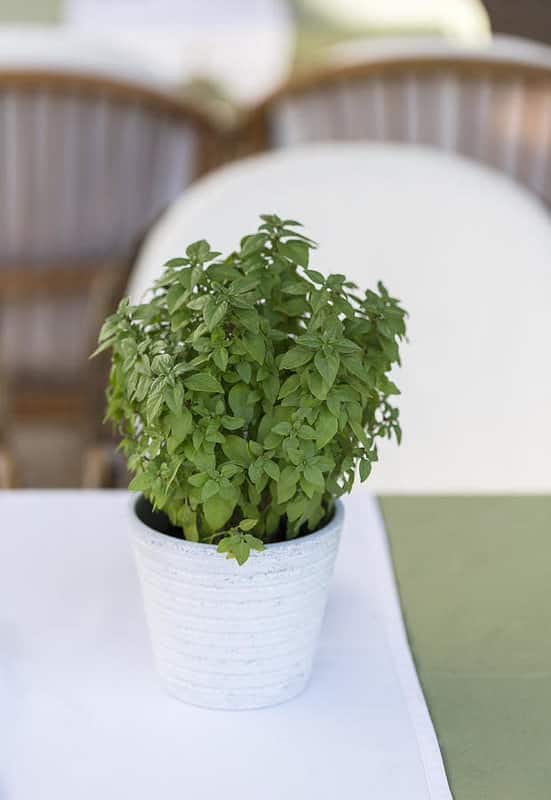
For the best flavor, grow Genovese basil. If you have limited space, opt for Spicy Globe and Bush basil. They are compact and short and grow well indoors. Also, there are dozens of other types of basil listed here for you to grow, but one thing is clear: all basil varieties are suitable for this purpose.
Check 22 Types of Basil to Grow here
Container Size for Growing Basil
Basil grows well in any container. Make sure it has adequate drainage holes. You can start growing basil indoors in small 6-8 inches deep pots. Once the plant becomes mature, bigger, and outgrows the existing pot, repot it into one size bigger container.
Grow Basil with Other Edibles
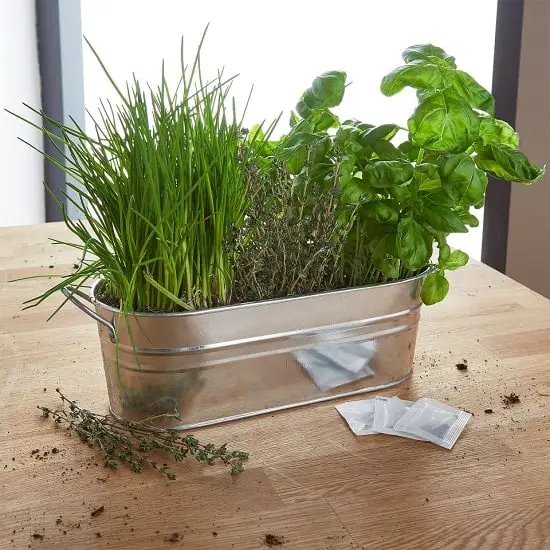
You can also plant basil with other herbs and vegetables that thrive in a similar growing environment as basil in the same pot in your indoor vegetable garden. Grow it with Tomatoes or Parsley on a sunny windowsill. It’s also an excellent companion plant for Peppers, Oregano, Lettuce, Chives, and Chamomile.
Requirements For Growing Basil Indoors

Position
Basil loves the sun and requires at least 4-6 hours of sunlight to grow well. Place the plant near a South or West-facing window, and if you have a balcony, keep it there.
You can also give it Eastern exposure, but lack of sunlight may cause slow growth. You can install window boxes outside your windows, too, and grow basil and other herbs in them.
A Tip: If you’re growing basil in a hot climate, save the plant from the sweltering afternoon sun.
Learn 9 Steps for Never Ending Supply of Basil here
Soil
Basil thrives in rich and fluffy soil that’s well-drained with a slight moisture-retaining capacity. The optimum pH ranges from slightly acidic to slightly alkaline. You can use any regular soilless potting mix for this purpose that has all the above qualities.
Many commercial potting mixes come with pre-added fertilizer in them; if yours does not, add compost to the growing medium at the time of planting.
Watering
Outdoor basil prefers moist soil, but indoor growing conditions are different. Overwatering can quickly kill this herb due to the lack of evaporation and transpiration. It’s better to be extra careful with watering.
Keep the soil slightly moist, but water the plant only when you notice the topsoil getting dry. Do not spray water on leaves, and reduce watering in cold and wet weather.
Check out the 7 Best Flowering Basil Plants here
Indoor Basil Plant Care
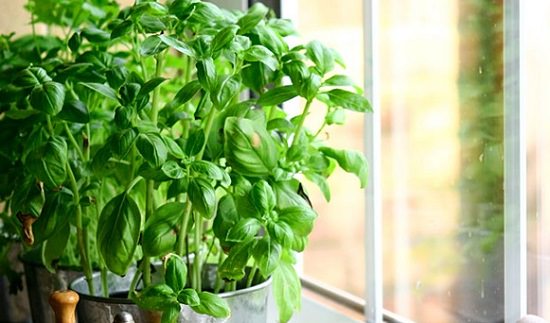
Fertilizer
Fertilize your basil plant every 2 weeks with half-strength balanced liquid fertilizer during the growing season. Reduce the fertilizer frequency if you see overfertilization symptoms like browning leaf tips, wilting or yellowing lower leaves, and a white crust of accumulated salts on the soil. If required, flush the soil.
To understand the plant nutrient deficiency symptoms well, check out this article from the University of Arizona’s Extension.
A Tip: If you see yellowing older leaves and an overall pale plant, lack of lushness, and slow growth, this could be due to Magnesium deficiency. To cure it, dissolve 1 tablespoon of Epsom salt in 1 gallon of water and water basil and other plants you have the usual way.
Use Grow Lights
You can also substitute sunlight using grow lights. These artificial lights offer the right environment for basil to thrive.
From CFL and LED grow lights, LEDs are more energy-efficient, easy to use, long-lasting, and available in compact sizes, which are suitable for small setups.
One downside of LED lights is they’re costly, but you can also design your own cheap DIY LED Grow Light Panels with our free plans here.
You can use full-spectrum grow lights or LEDs that emit both blue and red spectrums. If you want to supplement a few hours of sunlight to support vegetative growth, use a grow light with a blue spectrum only. Follow the manufacturer’s instructions for placement, distance, and time.
Pruning and Clipping
Regular clipping of the plant results in more rounded and fuller leaves. Always remove basil’s flowers as it allows the plant to direct its energy towards more foliage growth. Also, pinch off the top set of leaves to encourage lateral growth.
Pests and Diseases
Basil is generally safe from most of the regular pests and diseases, but keep an eye on aphids. You can easily handpick them and squeeze their soft body. In diseases, it’s susceptible to fusarium wilt and mildews. Using an organic fungicide can help you curb the problem.
Basil Leaves Turning Black or Brown? Click here to learn the reasons and solutions
Basil Care in Winters
The best part about growing basil indoors is you don’t need to worry much about freezing temperatures, and you can enjoy this Mediterranean herb during the cold weather. But be extra careful in winter and follow these tips:
- Keep the plant in a warm spot, away from cold drafts and heating vents.
- Room temperature around or above 60-70 F (15-21 C) should be optimum.
- Make sure the growing spot will remain warm at night, as well.
- Reduce watering and fertilize lightly only if necessary.
- Don’t place your basil plant very close to the window in winter. Ensure the leaves do not touch the windowpane directly to avoid cold injury.
Harvesting Basil
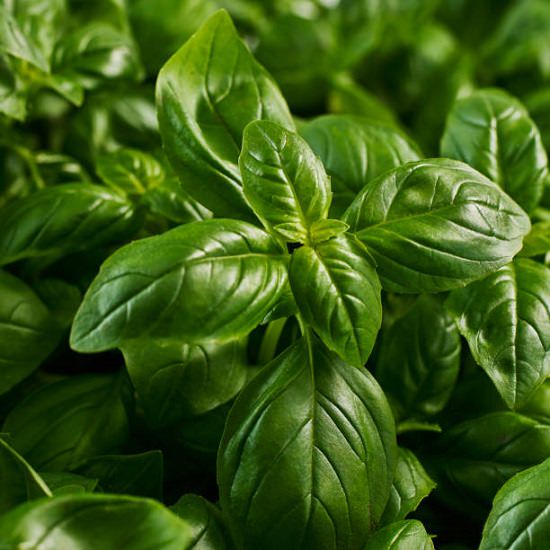
Start harvesting once your basil plant becomes a few inches tall. When you spot 3 to 5 sets of leaves, pick them from the top, leaving the set of the second leaves. Repeating the process every 10-14 days will make basil grow new shoots and produce a healthy specimen.
This is the best way to harvest your basil plant and get yourself more than 20 cups of delicious and fresh basil leaves per season! Garnish your salads and use them in several gourmet recipes to add the signature flavor basil is known for.
Check 9 Important Basil Harvesting Tricks No One Ever Told You here
Key Takeaways
- Carry out the indoor basil plant to your sunny porch, rooftop, or balcony when the weather is good, at least once a week.
- After the flowering period ends or when you see it dying, clip 2-3 cuttings and propagate them to have new basil plants.
- Keep removing flowers. Deadheading will increase the vegetative growth and life of your basil plant.
- Grow at least 3 basil plants to enjoy a continuous harvest.
- Growing basil indoors is super easy in subtropical and tropical climates.
- In cold climates, you can grow basil this way till November and beyond. All the winter with some care.


